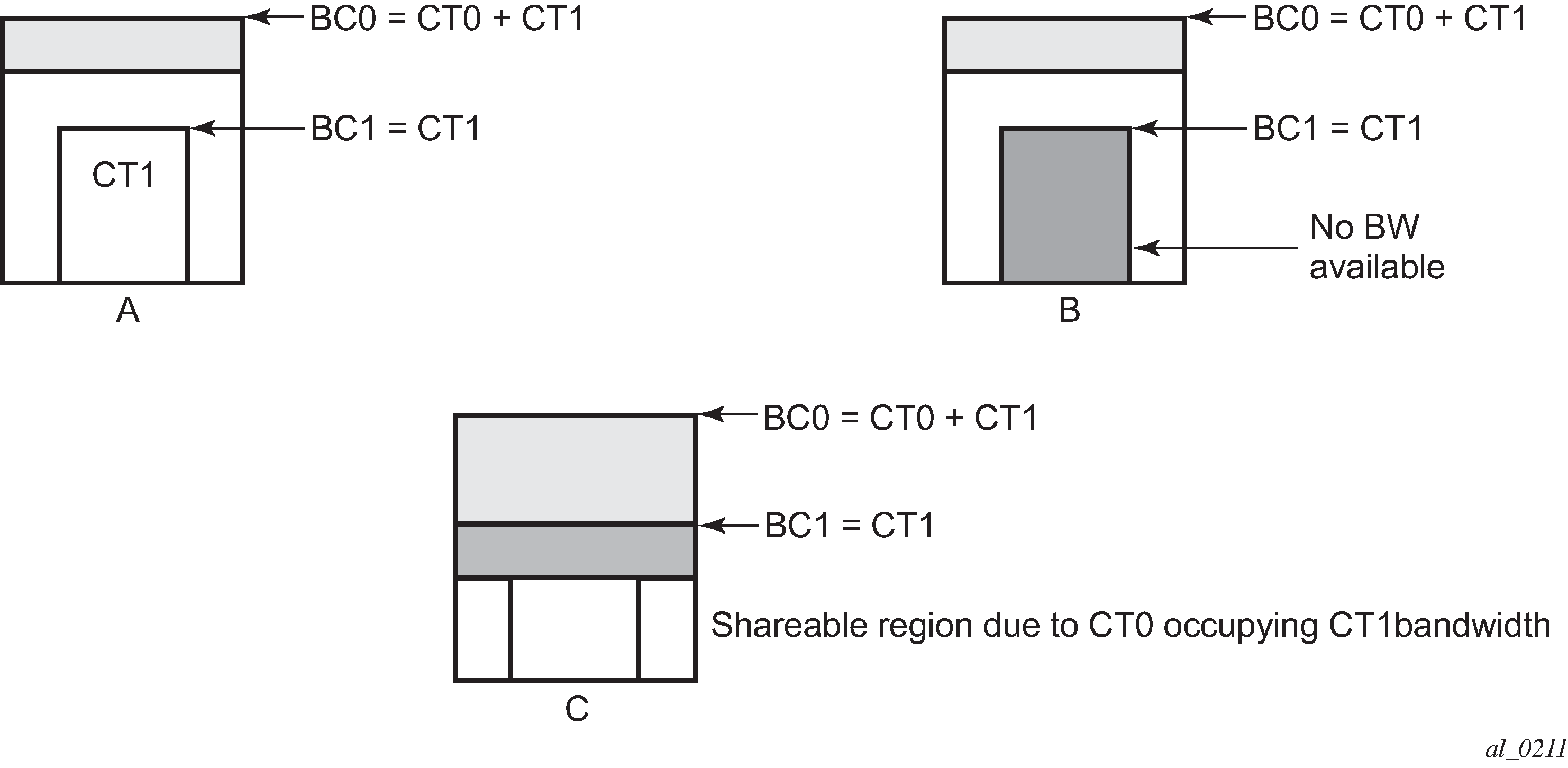When upgrading the CT the following issue can be apparent. Assume an LSP path X exists with CT0. An attempt is made to upgrade this path to a new path Z with CT1 using an MBB.

In Figure 1 (a), if the path X occupies the bandwidth as shown it cannot share the bandwidth with the new path Z being setup. If a condition exists, as shown in Figure 1, (b) the path Z can never be setup on this particular link.
Consider Figure 1 (c). The CT0 has a region that overlaps with CT1 as CT0 has incursion into CT1. This overlap can be shared. However, to find whether such an incursion has occurred and how large the region is, it is required to know the reserved bandwidths in each class. Currently, IGP-TE advertises only the unreserved bandwidths. Hence, it is not possible to compute these overlap regions at the head end during CSPF. Moreover, the head end needs to then try and mimic each of the traversed links exactly which increases the complexity.
CSPF at the head-end node only attempts to signal the LSP path with an upgraded CT if the advertised bandwidth for that CT can accommodate the bandwidth. In other words, it assumes that in the worst case this path does not share bandwidth with another path of the same LSP using a lower CT.